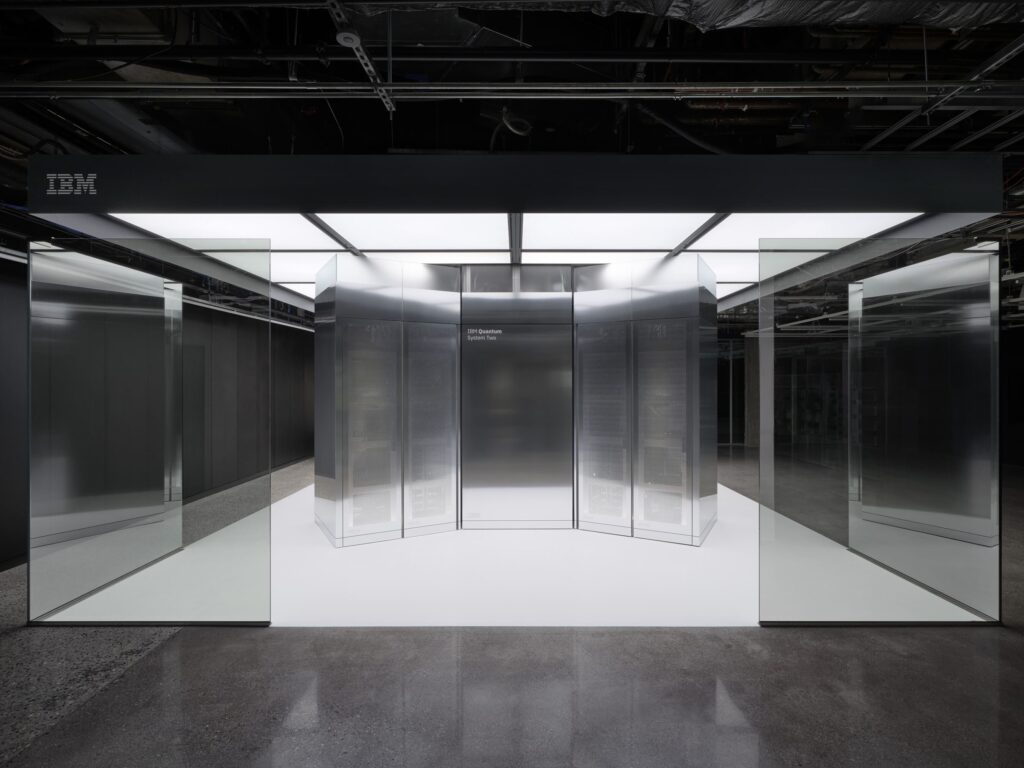IBM and AMD have announced a strategic partnership that could mark a turning point in computing history. Both companies plan to develop quantum-centric supercomputing architectures, integrating the best of IBM’s quantum computers with the power of AMD’s high-performance accelerators and artificial intelligence.
The goal: create open and scalable platforms capable of solving problems currently beyond the reach of classical computing.
Moving Toward Quantum-Centric Computing
Unlike traditional computers that process information using bits (0s or 1s), quantum computers utilize qubits, which can represent multiple states simultaneously thanks to the laws of quantum mechanics. This exponentially expands the available computational space and opens the door to solving complex calculations in areas such as:
- Drug and material discovery
- Large-scale logistics optimization
- Molecular modeling and chemical reactions
The IBM Quantum System Two, recently introduced as the company’s first modular quantum computer, will serve as the cornerstone of this hybrid architecture. Its design will enable the combination of quantum and classical resources to tackle problems in parallel.

Leader Statements
Arvind Krishna, IBM’s President and CEO, explained:
“Quantum computing will simulate the natural world and represent information in a completely new way. With AMD, we will build a hybrid model that goes beyond the limits of traditional computing.”
Lisa Su, AMD’s CEO, stated:
“High-performance computing is the foundation for solving the world’s most pressing challenges. With IBM, we see enormous opportunities to accelerate innovation through the convergence of classical and quantum computing.”
A Hybrid Model for Real-World Problems
IBM and AMD’s vision is clear: each computing paradigm should handle what it does best. For example:
- Quantum computers could simulate the dynamics of atoms and molecules.
- Classical supercomputers (powered by AMD’s CPUs, GPUs, and FPGAs) would handle massive data analysis and AI algorithms.
This would result in a mixed system with unprecedented capabilities, capable of efficiently executing heterogeneous workloads.
Additionally, AMD’s expertise in real-time error correction will be vital for achieving fault-tolerant quantum computing before the decade’s end.
Demonstrations Coming in 2025
Both companies plan to perform an initial demonstration before the end of the year, showcasing how IBM’s quantum computers can work in tandem with AMD’s technologies in hybrid workflows.
They will also leverage open-source ecosystems, like Qiskit, to promote new algorithm development and accelerate the adoption of this architecture.
Paths to Integration
IBM has already taken steps toward quantum-classical integration, such as collaborating with RIKEN in Japan, connecting its Quantum System Two with the supercomputer Fugaku. It has also partnered with entities like Cleveland Clinic, the Basque Government, and Lockheed Martin on hybrid projects.
In turn, AMD powers some of the world’s most powerful supercomputers:
- Frontier at Oak Ridge National Laboratory (USA), the world’s first official exascale computer.
- El Capitan at Lawrence Livermore National Laboratory, also leading the TOP500 rankings.
Their EPYC CPUs and Instinct GPUs are used in generative AI solutions deployed by major corporations and cloud providers.
What’s at Stake
Beyond the corporate alliance, this initiative raises a strategic question for the future of global technology: Will the convergence of quantum and classical computing be key to the next industrial revolution?
IBM and AMD’s collaboration aims to proactively address this with a pragmatic approach: creating real, open, and scalable tools that benefit not just tech giants but also fields like medicine, energy, advanced engineering, and sustainability.
FAQs
1. What does “quantum-centric computing” mean?
It’s a hybrid model where quantum computers do not operate in isolation but are integrated with classical supercomputers and AI systems. Each technology handles the part of the problem best suited to its capabilities, combining the strengths of both.
2. Why did IBM and AMD partner?
IBM leads in quantum computing and related software, while AMD dominates high-performance computing (HPC) and AI acceleration. Their union seeks to develop architectures that integrate both technologies to solve more complex problems.
3. Which sectors will see the first benefits?
Advances are expected in drug discovery, new materials, logistics optimization, advanced finance, and climate and sustainability. These are areas where current models are limited, and hybrid computing could make a significant difference.
4. What role does open-source software play?
Projects like Qiskit will be essential for democratizing access, enabling researchers and developers to create new algorithms and speed up the global adoption of quantum computing.

